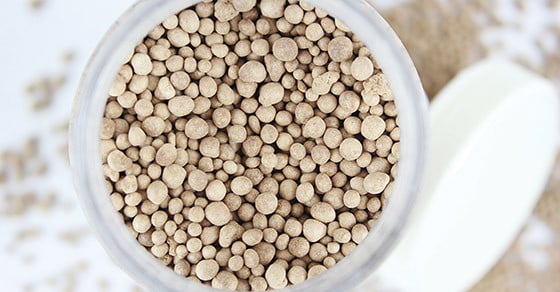Pelletizing, a type of tumble-growth (non-pressure) agglomeration, is a valuable tool in the mineral processing industry. The technique’s diverse functionality and wide applicability have made it a common processing technique for a broad range of minerals.
Here’s a look at how the mineral processing industry employs pelletizing to solve material problems, improve economics, and produce a premium product.
What is Pelletizing?
The term pelletizing is often used interchangeably to refer to various types of non-pressure agglomeration techniques that transform a powder or material fines into larger particles/agglomerates.
The term is perhaps most used when referring to the production of rounded granules on a disc pelletizer or in a drum agglomerator. However, it may also be used to refer to the production of micro pellets in a pin mixer or other approach to tumble-growth agglomeration.
Commonly Pelletized Minerals
Minerals are incredibly diverse, allowing them to be processed and used in a countless number of ways. As such, it would be impossible to define all of the minerals that may be pelletized throughout their many applications and uses. Minerals that are commonly pelletized include:
- Alumina
- Basalt
- Bauxite
- Borax
- Clay
- Ferrous minerals
- Fluorite
- Gypsum
- Iron Ore
- Limestone
- Nickel
- Phosphorus
- Potash
- Silica
How Mineral Pelletizing Works
Pelletizing generally describes particle size enlargement (agglomeration) through motion with the aid of a liquid binder. Unlike some other agglomeration techniques, pressure is not employed; particle fines are made tacky through the addition of the liquid binder, while a tumbling motion allows the sticky fines to collect into a mass, picking up additional fines as they roll. For this reason, tumble-growth agglomeration is also sometimes referred to as agitation agglomeration.
Pelletizing is typically carried out using either a pin mixer, disc pelletizer, or agglomerator (rotary drum), or, when a premium granule is desired, a pin mixer and disc pelletizer combination.
A typical pelletizing flow diagram utilizing a pin mixer and disc pelletizer combination is shown below. This setup is frequently used for pelletizing limestone and gypsum into a refined soil amendment product.
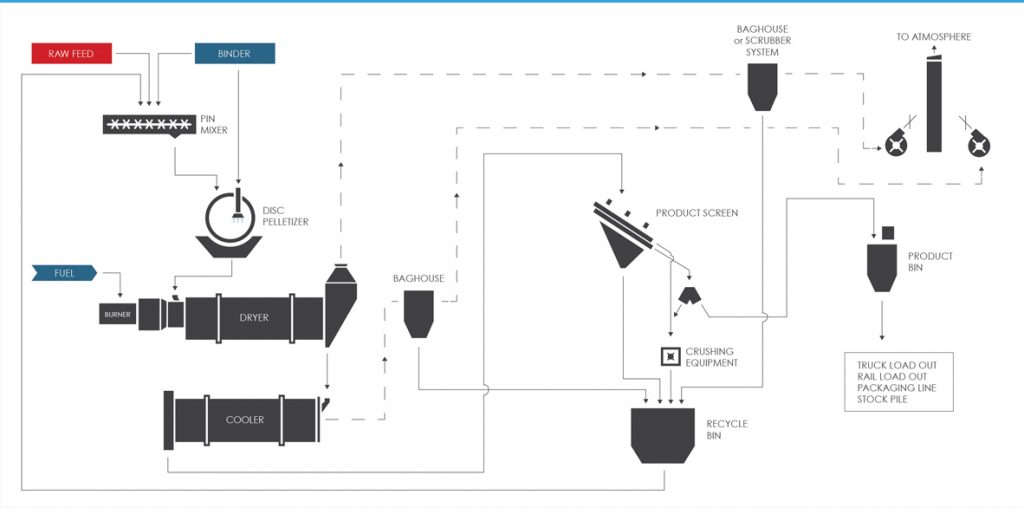
The pin mixer serves as a preconditioning device, in which the material fines are uniformly mixed with the liquid binder and seed pellets begin to form. The seed pellets are then fed to the disc pelletizer where the continuous addition of fines and binder, along with the tumbling action of the rotating disc, causes the seed pellets to pick up additional fines, growing via coalescence.
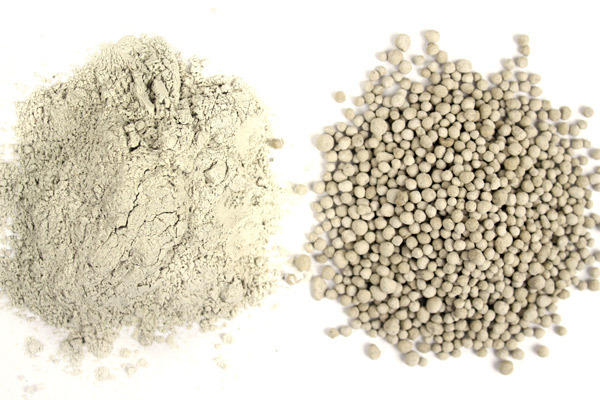
Limestone powder before and after pelletizing using the pin mixer to disc pelletizer approach
Why Pelletize Minerals?
Pelletizing can offer a wide range of benefits, depending on the mineral being processed and the intended end use. Typical benefits include:
Stable and Efficient Mineral Processing
Production processes can be greatly improved by pelletizing in many cases. This occurs through enhanced process flow, increased efficiency, and the elimination of dust and fines.
Pelletizing is also widely used as a way to improve downstream processes as well. For example, because pellets improve heat transfer in a material bed, minerals are often pelletized prior to thermal treatment. Such is the case with iron ore, which is pelletized or “balled” in preparation of the steel-making process, because it reduces the amount of coking coal required in the furnace, while also lowering emissions and providing several other advantages.
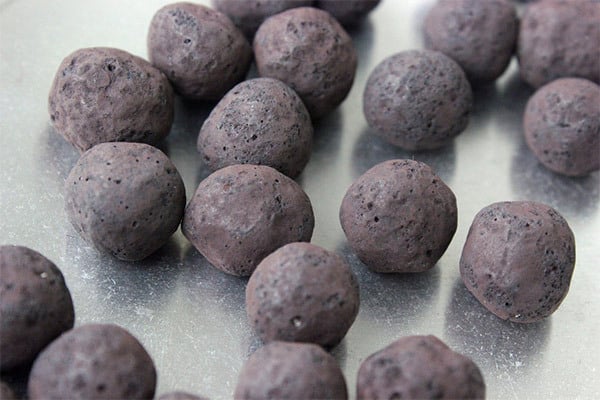
Pelletized iron ore produced in the FEECO Innovation Center
Better End Product Quality
Minerals are also frequently pelletized as a way of controlling particle characteristics to improve their appearance, handling, and performance qualities as an end product. From managing active ingredient release, to optimizing product density and more, processing techniques have advanced to a point where manufacturers are able to produce a product with the exact combination of characteristics they’re looking for. The pelletizing process is also flexible in terms of controlling product formulation through easy inclusion of additives.
For these reasons, pelletizing is a common technique in the fertilizer and soil amendment industry. Here, minerals can be pelletized with micronutrients, organic binding agents, or other beneficial additives to yield a high-performance complex fertilizer or other soil treatment product. The product may then be coated as part of the pelletizing process to control release properties or impart improved handling and storage characteristics.
Improved Handling and Storage
Similarly, handling and storage properties are another key reason for pelletizing minerals. Handling and storage challenges such as dust generation, lack of flowability, segregation issues, and more, can all be addressed through pelletizing by controlling particle characteristics such as bulk density, attrition, moisture content, shape, and size, among others.
Material fines that have been processed into pellets are also much more economical to transport and can help producers to avoid the liabilities often associated with a dusty product.
Developing a Mineral Pelletizing Process
Batch and pilot testing are an essential part of developing a pelletizing process that performs efficiently and can reliably produce a consistent product.
The pelletizing process is often considered a blend of art and science, because the unique matrix of material composition and characteristics causes every material to respond differently to agglomeration; even minerals with a well-established industry require significant testing due to their natural variation.
Mineral pelletizing tests at batch and pilot scale are used in the FEECO Innovation Center to evaluate the process variables necessary to produce a product with the desired characteristics on a continuous basis from the specific mineral source.
“Customers are always surprised at the nuances behind a successful pelletizing operation,” says FEECO Process Sales Engineer and agglomeration expert, Chris Kozicki. “A good mineral pelletizing line looks effortless, but is a delicately balanced set of variables. Through our process development testing techniques, we help our customers to define what’s important for a given material, and then use those process variables to control the outcome.”
Variables that affect the stability of the pelletizing line, as well as the quality of the end product, vary depending on the material and the process employed. In general, however, the following parameters play an influential role in the process:
- Bulk density
- Material consistency
- Particle size distribution
- Moisture content
- Material feed rate
- Binder feed rate
- Retention time
- Rotational speed
- Temperature
- Disc angle
- Raw material feed location
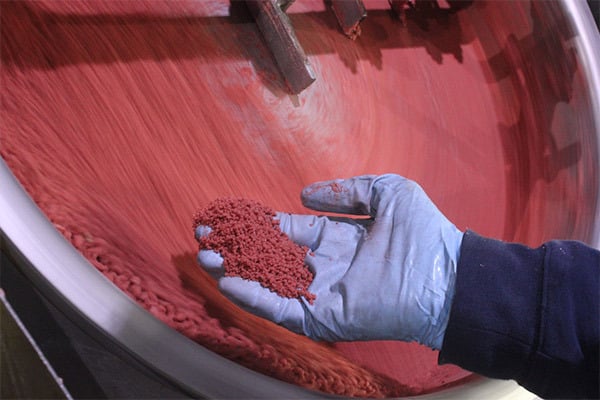
A Process Engineer runs a batch pelletizing test on a disc pelletizer
Testing in the Innovation Center is not only used to develop a continuous process, but also to aid in the design of equipment for reproducing the process in a commercial-scale production facility.
Conclusion
Pelletizing is an integral technique in the mineral processing industry, allowing manufacturers and producers to create premium products, improve economics, and yield a more stable production line.
Relied on by the industry’s biggest players, FEECO is the global leader in mineral pelletizing systems, custom equipment, process development, and parts and service support. For more information on our comprehensive mineral pelletizing offerings, contact us today!



